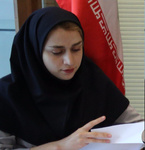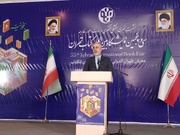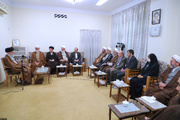Head of Iran Space Agency Morteza Barari announced on October 1 that three satellites namely, Payam-e-Amirkabir, Dousti and Nahid-1, which have been designed and developed by domestic experts, are now ready to take off.
Noting that the launch date is not determined yet, the official expressed hope that all will be orbiting the Earth by the end of the current Iranian year (March 21, 2019).
Dousti: monitoring satellite
Meaning “friendship” in Persian, Dousti will probably be the first of the three to go into the space. Dousti is a micro-class 52-kilogram satellite developed by the experts from Sharif University of Technology.
It is a remote-sensing satellite, which will orbit the Earth at an altitude of between 250 km and 310 km, commonly known as Low Earth Orbit. LEOs are satellite systems used in telecommunication, which orbit in altitudes of less than 2,000 kilometers. They are used mainly for data communication such as email, video conferencing and paging.
Barari, who is also a deputy telecoms minister, said, “formal procedures for sending Dousti into the space are being carried out.”

Nahid-1: telecommunication satellite
Nahid-1, which means “Venus” in Persian, is another Low-Earth orbit communications micro-class satellite, designed and developed by ISA in cooperation with the Iranian Space Research Center.
The solar-powered satellite will be placed in the geosynchronous orbit for carrying out telecommunication missions.
A telecommunications satellite is an artificial satellite that relays and amplifies radio telecommunications signals via a transponder; it creates a communication channel between a source transmitter and a receiver at different locations on Earth.
It is part of a bigger project, which includes the construction of another satellite dubbed Nahid-2. The whole project is expected to be completed by 2021. The completion of the two devices would help improve Iran’s ranking in space telecommunication.
The mission of Nahid-2 is to focus on the development and testing of basic technologies needed for building geostationary communication satellites with an operational life of two years. It can establish communications and measure radiation and test simultaneous telephone connections.

Payam-e-Amirkabir: monitoring satellite
Payam-e-Amirkabir, designed and developed by experts of Amirkabir University of Technology, is slated to carry out imagery and telecommunication missions.
Designed to orbit the Earth at an altitude of 500 kilometers, and an inclination of 55 degrees, it will be used to take surveying images at resolutions less than 40 meters. The satellite will also be used for store-and-forward (data collection) missions and detecting space rays.
The micro-class satellite weighs 100-kilogram and will have a life endurance of 2 years.

Both Nahid-1 and Payam-e-Amirkabir, which are enhanced by a range of indigenous technologies, are set to join the orbit by the Iranian Simorgh carrier.
Simorgh is the country’s largest carrier rocket, which was launched in July 2017 for the first time, marking a potential major step in the country’s ongoing efforts to develop space launch vehicles capable of placing sizeable satellites into orbit.
Simorgh, Persian for “Phoenix,” represents a second-generation vehicle with a reported payload capacity of 250 kilograms into a 500-km orbit – enabling the exploitation of space for Earth-observation, meteorology and communications.
Iran has successfully launched other satellites into orbit with the country’s Safir-1, Safir-1A and Safir-1B rockets.
The satellites made in Iran so far have been remote sensing satellites, while the efforts for producing local telecoms satellites began three years ago.
Reportedly, Iran is amongst the 10 countries that have the ability to design, build and launch satellites to space, Barari said.
The country successfully launched into orbit its first indigenous data-processing satellite, Omid (Hope) in February 2009.
Iran also sent its first bio-capsule containing living creatures into space in February 2010, using the indigenous Kavoshgar-3 (Explorer-3) carrier.
Mesbah is also another Low-Earth Orbit telecommunication satellite of Iran that was planned to be used for scientific research and educational purposes. It is one of the first satellite projects of Iran after the Islamic Revolution. In 2003 while undergoing tests in Italy’s Carlo Gavazzi’s research unit, the satellite was seized by European Union sanctions compliance officers citing sanctions against Iran. After Iran nuclear deal was signed in 2015, Iran could take Mesbah back, however ISA decided not to go ahead with the project as the costs would far exceed early estimates.
MR/IRN 83050472

























Your Comment